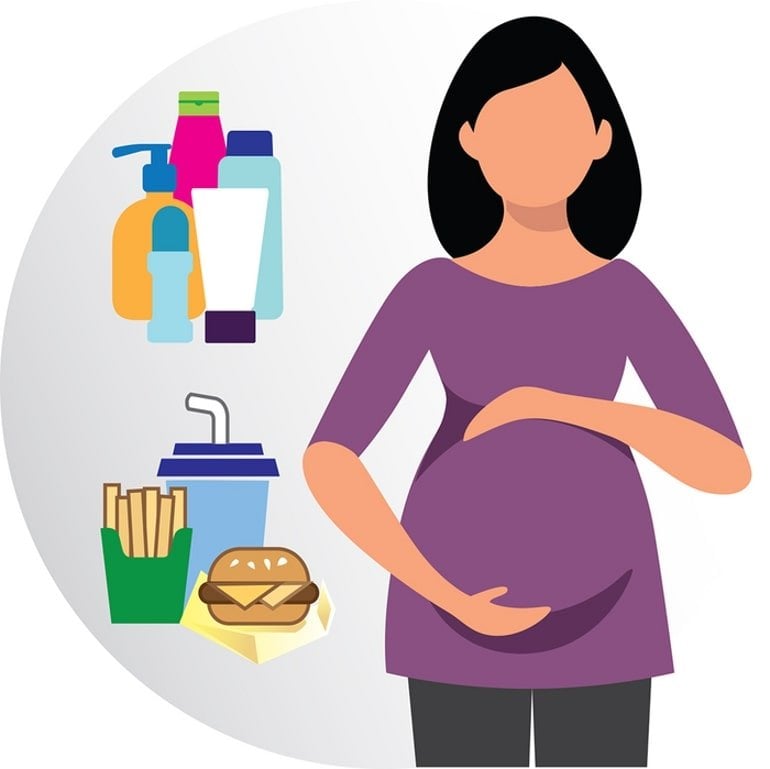Summary: Exposure to multiple phthalates during pregnancy increases the risk for preterm birth, researchers report.
Source: NIH
Pregnant women who were exposed to multiple phthalates during pregnancy had an increased risk of preterm birth, according to new research by the National Institutes of Health.
Phthalates are chemicals used in personal care products, such as cosmetics, as well as in solvents, detergents, and food packaging.
After analyzing data from more than 6,000 pregnant women in the United States, researchers found that women with higher concentrations of several phthalate metabolites in their urine were more likely to deliver their babies preterm, which is delivering three or more weeks before a mother’s due date.
“Having a preterm birth can be dangerous for both baby and mom, so it is important to identify risk factors that could prevent it,” said Kelly Ferguson, Ph.D., an epidemiologist at the National Institute of Environmental Health Sciences (NIEHS), part of NIH, and the senior author on the study published in the journal JAMA Pediatrics.
In this study, the largest study to date on this topic, Ferguson and her team pooled data from 16 studies conducted across the United States that included individual participant data on prenatal urinary phthalate metabolites (representing exposure to phthalates) as well as the timing of delivery.
Researchers analyzed data from a total of 6,045 pregnant women who delivered between 1983-2018. Nine percent, or 539, of the women in the study delivered preterm. Phthalate metabolites were detected in more than 96% of urine samples.
Higher concentrations of most phthalate metabolites examined were associated with slightly higher odds of preterm birth.

Exposure to four of the 11 phthalates found in the pregnant women was associated with a 14-16% greater probability of having a preterm birth. The most consistent findings were for exposure to a phthalate that is used commonly in personal care products like nail polish and cosmetics.
The researchers also used statistical models to simulate interventions that reduce phthalate exposures. They found that reducing the mixture of phthalate metabolite levels by 50% could prevent preterm births by 12% on average.
Interventions targeting behaviors, such as trying to select phthalate-free personal care products (if listed on label), voluntary actions from companies to reduce phthalates in their products, or changes in standards and regulations could contribute to exposure reduction and protect pregnancies.
“It is difficult for people to completely eliminate exposure to these chemicals in everyday life, but our results show that even small reductions within a large population could have positive impacts on both mothers and their children,” said Barrett Welch, Ph.D., a postdoctoral fellow at NIEHS and first author on the study.
Eating fresh, home-cooked food, avoiding processed food that comes in plastic containers or wrapping, and selecting fragrance-free products or those labeled “phthalate-free,” are examples of things people can do that may reduce their exposures. Changes to the amount and types of products that contain phthalates could also reduce exposures.
The researchers are conducting additional studies to better understand the mechanisms by which exposure to phthalates can affect pregnancy and to determine if there are effective ways for mothers to reduce their exposures.
About this environmental neuroscience and pregnancy research news
Author: Robin Mackar
Source: NIH
Contact: Robin Mackar – NIH
Image: The image is credited to NIEHS
Original Research: Closed access.
“Associations Between Prenatal Urinary Biomarkers of Phthalate Exposure and Preterm Birth A Pooled Study of 16 US Cohorts” by Welch BM et al. JAMA Pediatrics
Abstract
Associations Between Prenatal Urinary Biomarkers of Phthalate Exposure and Preterm Birth A Pooled Study of 16 US Cohorts
Importance
Phthalate exposure is widespread among pregnant women and may be a risk factor for preterm birth.
Objective
To investigate the prospective association between urinary biomarkers of phthalates in pregnancy and preterm birth among individuals living in the US.
Design, Setting, and Participants
Individual-level data were pooled from 16 preconception and pregnancy studies conducted in the US. Pregnant individuals who delivered between 1983 and 2018 and provided 1 or more urine samples during pregnancy were included.
Exposures
Urinary phthalate metabolites were quantified as biomarkers of phthalate exposure. Concentrations of 11 phthalate metabolites were standardized for urine dilution and mean repeated measurements across pregnancy were calculated.
Main Outcomes and Measures
Logistic regression models were used to examine the association between each phthalate metabolite with the odds of preterm birth, defined as less than 37 weeks of gestation at delivery (n = 539). Models pooled data using fixed effects and adjusted for maternal age, race and ethnicity, education, and prepregnancy body mass index.
The association between the overall mixture of phthalate metabolites and preterm birth was also examined with logistic regression. G-computation, which requires certain assumptions to be considered causal, was used to estimate the association with hypothetical interventions to reduce the mixture concentrations on preterm birth.
Results
The final analytic sample included 6045 participants (mean [SD] age, 29.1 [6.1] years). Overall, 802 individuals (13.3%) were Black, 2323 (38.4%) were Hispanic/Latina, 2576 (42.6%) were White, and 328 (5.4%) had other race and ethnicity (including American Indian/Alaskan Native, Native Hawaiian, >1 racial identity, or reported as other). Most phthalate metabolites were detected in more than 96% of participants.
Higher odds of preterm birth, ranging from 12% to 16%, were observed in association with an interquartile range increase in urinary concentrations of mono-n-butyl phthalate (odds ratio [OR], 1.12 [95% CI, 0.98-1.27]), mono-isobutyl phthalate (OR, 1.16 [95% CI, 1.00-1.34]), mono(2-ethyl-5-carboxypentyl) phthalate (OR, 1.16 [95% CI, 1.00-1.34]), and mono(3-carboxypropyl) phthalate (OR, 1.14 [95% CI, 1.01-1.29]).
Among approximately 90 preterm births per 1000 live births in this study population, hypothetical interventions to reduce the mixture of phthalate metabolite levels by 10%, 30%, and 50% were estimated to prevent 1.8 (95% CI, 0.5-3.1), 5.9 (95% CI, 1.7-9.9), and 11.1 (95% CI, 3.6-18.3) preterm births, respectively.
Conclusions and Relevance
Results from this large US study population suggest that phthalate exposure during pregnancy may be a preventable risk factor for preterm delivery.






